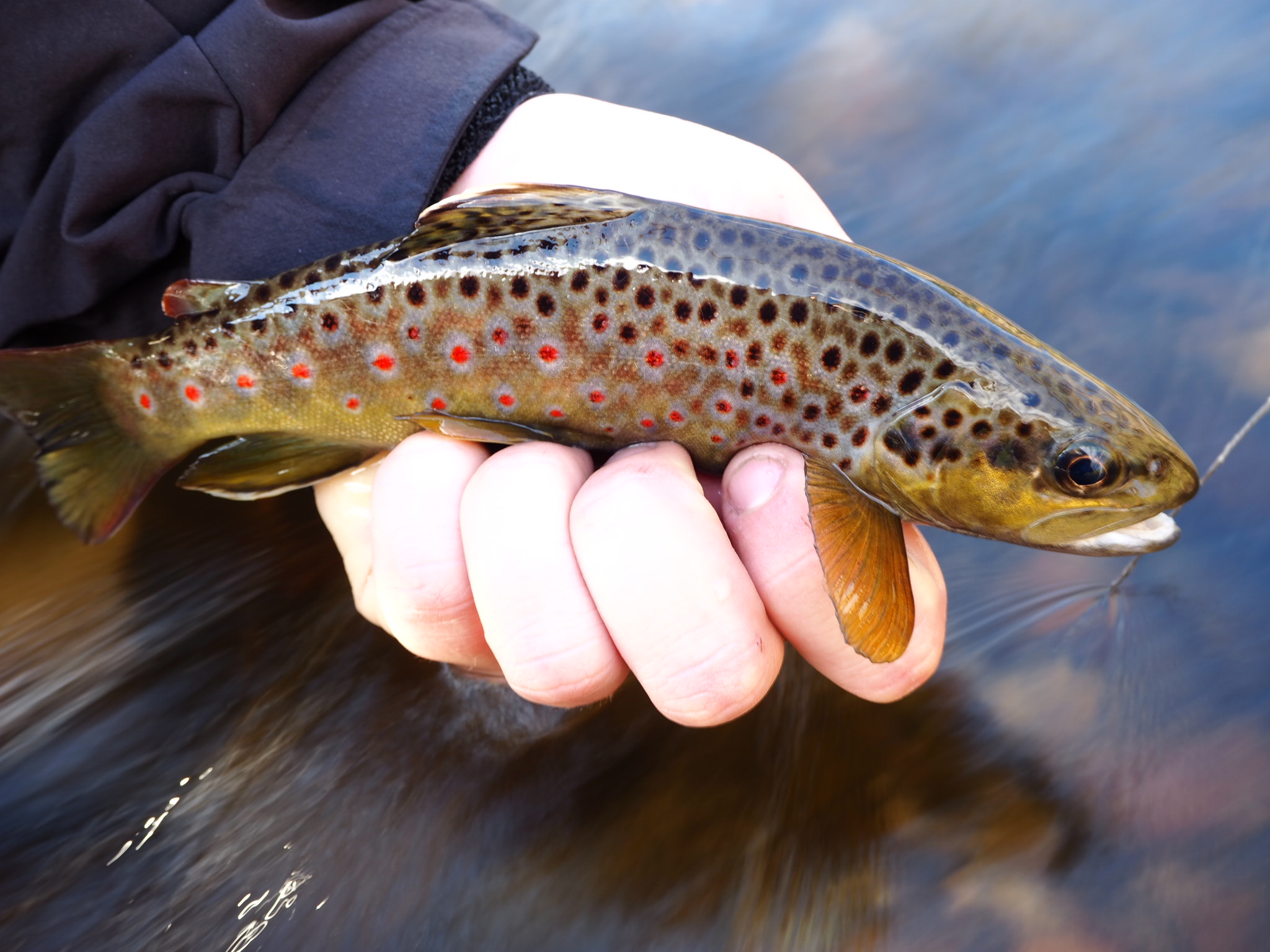How to catch trout
Lake fishing
 Trout, the elusive and prized catch for many anglers, can be caught in several ways depending on one's preferred method and level of enthusiasm. Boat fishing is a popular method, particularly by flatlining - i.e., trolling lures on the surface. Others prefer to troll lures and bait deeper with specialised devices and weighted lines designed to get the lure well down. Shore-based fishers are well-served by a mixture of walking the shoreline with a spin rod casting lures, covering water with a fly rod, or waiting for a specific hatch situation. For those who prefer to stay put, bait fishing can be a family-friendly way to enjoy time outside and experience the serenity of lake fishing.
Trout, the elusive and prized catch for many anglers, can be caught in several ways depending on one's preferred method and level of enthusiasm. Boat fishing is a popular method, particularly by flatlining - i.e., trolling lures on the surface. Others prefer to troll lures and bait deeper with specialised devices and weighted lines designed to get the lure well down. Shore-based fishers are well-served by a mixture of walking the shoreline with a spin rod casting lures, covering water with a fly rod, or waiting for a specific hatch situation. For those who prefer to stay put, bait fishing can be a family-friendly way to enjoy time outside and experience the serenity of lake fishing.
Trolling
The beauty of trolling large bodies of water is that you can actively find where the fish are holding on any given day. Don’t be afraid to experiment - trout can be caught in open water, and it's not uncommon to find them in the middle of a lake near the surface scouting for small baitfish. Trollers usually go as slow as their boats allow and have a couple of lines out behind the boat, set at various depths. Lures to consider include the Tasmanian Devil range of winged lures and bibbed minnows that resemble baitfish. Worms and mudeyes can be trolled too, usually behind an attractor such as a Ford Fender, dodger, or set of cowbells. Trollers can also use specialist methods to vary the depth of their lures. Downriggers, paravanes, trolling sinkers, and lead-core lines are all ways to get a lure down deeper. A 6-7ft medium-actioned rod with a 2500-sized reel, 3kg braided line, and 4kg monofilament or fluorocarbon leader of about 6ft is perfect for trolling.
Bait fishing
Bait fishing for trout by boat is a popular and productive approach to fishing the margins of lakes with a bait under a bubble float, especially around any structure or weed beds. Baits of mudeye or a live bait like a local trapped gudgeon are some examples. With bait fishing, patience is the key. Anglers should look for areas where trout are feeding and set up their rigs accordingly. Bait fishing can be an excellent way for families to spend time together outdoors, enjoying the tranquillity and beauty of lake fishing.
Shore-based fishers
Active anglers enjoy strolling or wading along lake perimeters, armed with a fly or spin rod, and using a "cast and move" strategy. This involves casting a series of fanned out casts in front of you, and then moving left or right, repeating the process to cover a section of shoreline with a great chance of intercepting an active trout. The same lures used for trolling work well for this prospecting style of fishing, with preference given to those that can be flung a long way.
In the right conditions, fly fishers can also enjoy success, although they cannot cover as much water as those using spin gear. Longer rods enable more water coverage, so a 7-7.5ft medium action rod with a 2500 size reel, 3kg braided line and a 3-4kg leader of around 6ft is ideal. For fly fishers, a forward-weighted line for longer casts is essential, or alternatively, focus on low light periods and target lake edges.
Bait fishing can be successful using a range of natural and artificial baits, such as mudeyes, glassies, earthworms and PowerBait. However, replicating the exact food source of the trout can lead to even greater success. It is important to match hook sizes with bait sizes, as any trout will inspect the bait thoroughly before eating it. If the bait doesn't look enticing enough to eat, the trout won't be interested either. To avoid anchoring the bait to the bottom, use rigs with the lightest sinkers possible, or alternatively, use a float to prevent the bait from getting lost in weed. The same tackle used for shore casting is suitable, but a rod holder should be added to secure the outfit into the lakeside soil. During early morning and evening, trout are known to cruise the edges, especially if the lake is rising, so don't hesitate to fish close to the shore.
Click here for catch limits on brown trout
